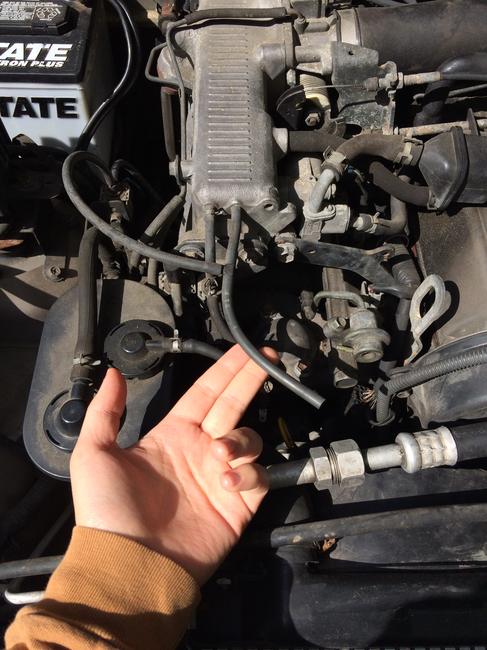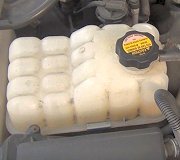It seems like you're referring to the overflow or coolant reservoir tank. It's a part of the cooling system which catches any coolant that overflows from the radiator. The coolant reservoir typically has two hoses:
One hose connects the reservoir to the radiator cap/cooling system. This hose allows coolant to be fed into or out of the system. This tube should definitely be connected.
The second hose is typically an overflow tube that allows excess coolant to escape from the reservoir in case it gets too full. This hose usually runs down the side of the reservoir and does not need to be connected to anything on the other end. Its purpose is simply to direct overflow coolant away from important parts of the vehicle to prevent damage. This one might be left unattached at the end, typically running towards the bottom of the car.
Regarding the very thin tube, without a clear picture or more specific description, it's a bit difficult to diagnose exactly what its purpose is. However, in general, if it's a thin rubber hose that splits in two directions, it could be part of the vehicle's vacuum system. These hoses are used to create vacuum pressure for various systems in the vehicle, including the heating/air conditioning system, power steering, and more.
If these hoses are cracked, damaged, or disconnected, it could affect the performance of your vehicle. If you're unsure, it would be best to have a professional mechanic take a look at the hoses to ensure they're correctly connected and in good condition. Misconnected or damaged vacuum lines can cause a variety of engine problems and performance issues.
SPONSORED LINKS
Saturday, May 2nd, 2015 AT 7:07 AM





